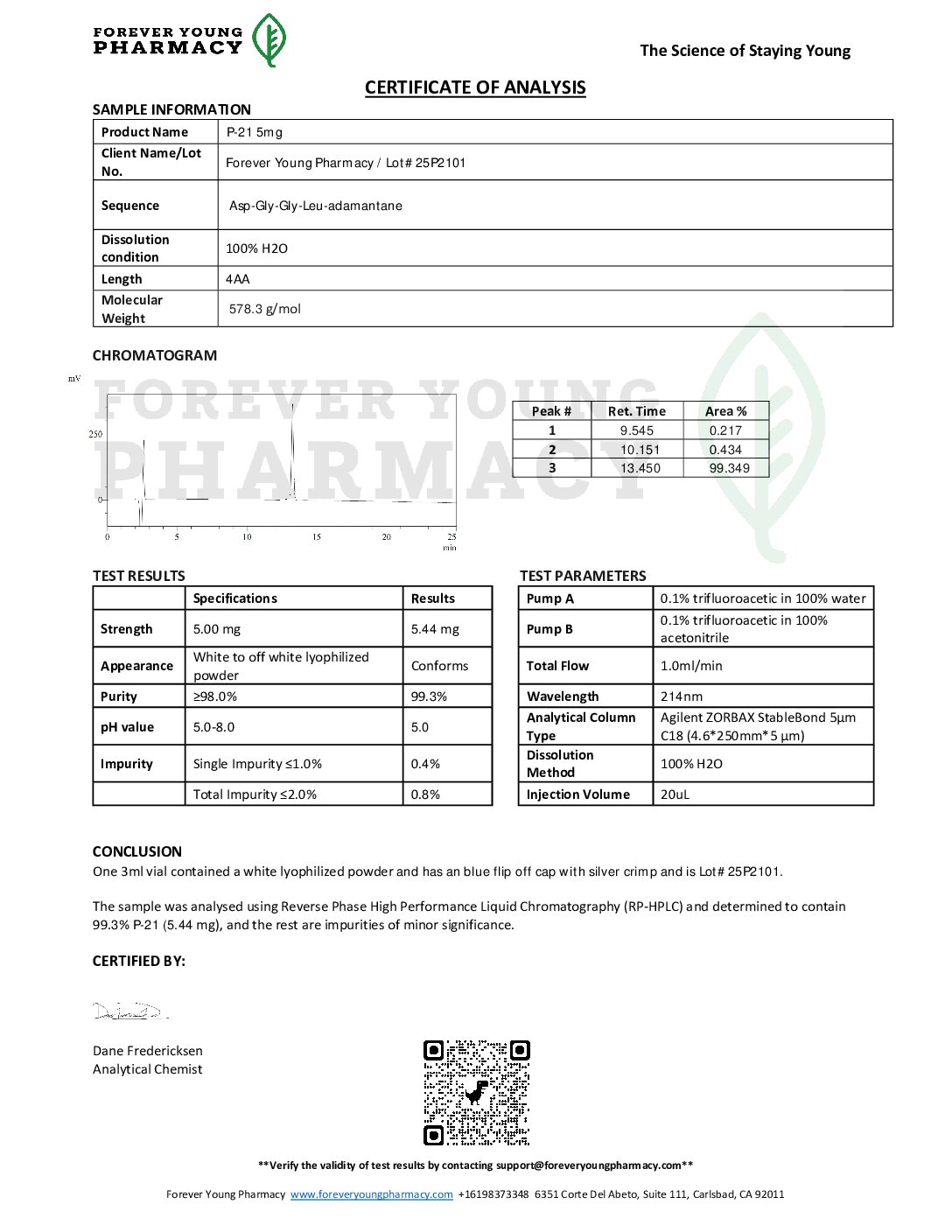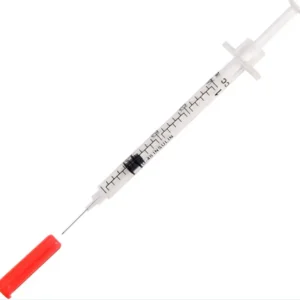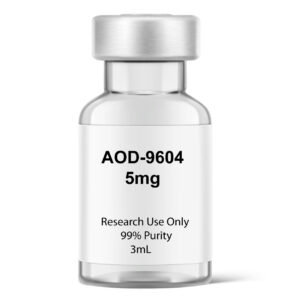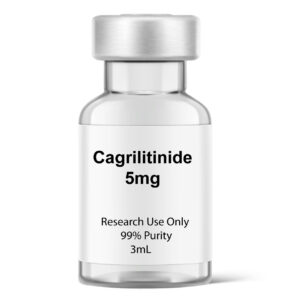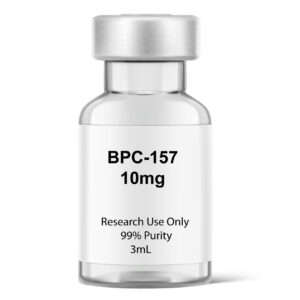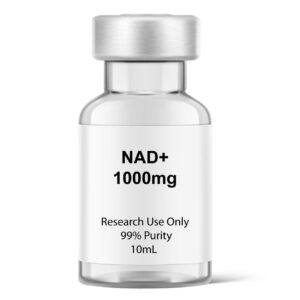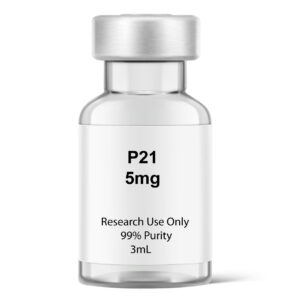Introduction to P-21
P-21, also known as Peptide 021, is a synthetic tetrapeptide derived through structural modeling of the active region of ciliary neurotrophic factor (CNTF). Designed for laboratory research, P-21 incorporates a lipophilic adamantane group to enhance peptide stability and blood-brain barrier permeability, making it a subject of interest in studies related to neuronal function, synaptic signaling, and neuroplasticity.
This compound is under investigation in preclinical models for its potential to support learning, memory, and cellular resilience in neurological environments. It is not approved for human or veterinary use and is strictly intended for in vitro and animal-based scientific studies.
Key Research Areas
P-21 is believed to engage neurotrophic pathways by interacting with receptor complexes involved in neuronal signaling, such as those associated with CNTF. Research indicates downstream activation of intracellular cascades (e.g., JAK/STAT, PI3K-Akt, MAPK/ERK), which are known to influence:
Neural plasticity
Cytoskeletal structure
Neuroprotective responses
Gene expression related to brain-derived neurotrophic factor (BDNF)
The addition of an adamantylglycine residue helps improve peptide half-life and resistance to enzymatic degradation in laboratory settings, making it suitable for extended observation windows in model organisms.
Key Research Areas
Studies using murine models, such as the 3xTg-AD line, have explored P-21’s potential in areas including:
Neurogenesis Support: Assessed through neural progenitor proliferation in brain tissue
Cognitive Performance: Evaluated via behavioral assays measuring memory and spatial recognition
Synaptic Function: Involving markers such as PSD-95, MAP2, and synapsin, which relate to neurotransmission and synaptic architecture
Neuroinflammatory Markers: Including glial fibrillary acidic protein (GFAP) levels in response to CNS stress
Metabolic Effects: Early-stage investigations into central signaling pathways that may influence feeding behavior (e.g., α-MSH modulation)
These findings are limited to controlled laboratory models and should not be interpreted as evidence for clinical outcomes.
Certificate of Analysis
The following technical details outline the properties of P-21 10mg, providing a scientific snapshot of the peptide.
Property | Description |
|---|---|
Chemical Sequence | Ac-DGGL-adamantylglycine-NH2 |
CAS Number | Not publicly disclosed (investigational peptide) |
Molecular Formula | C30H54N6O5 |
Molecular Weight | 578.3 g/mol |
Appearance | White Lyophilized Powder |


